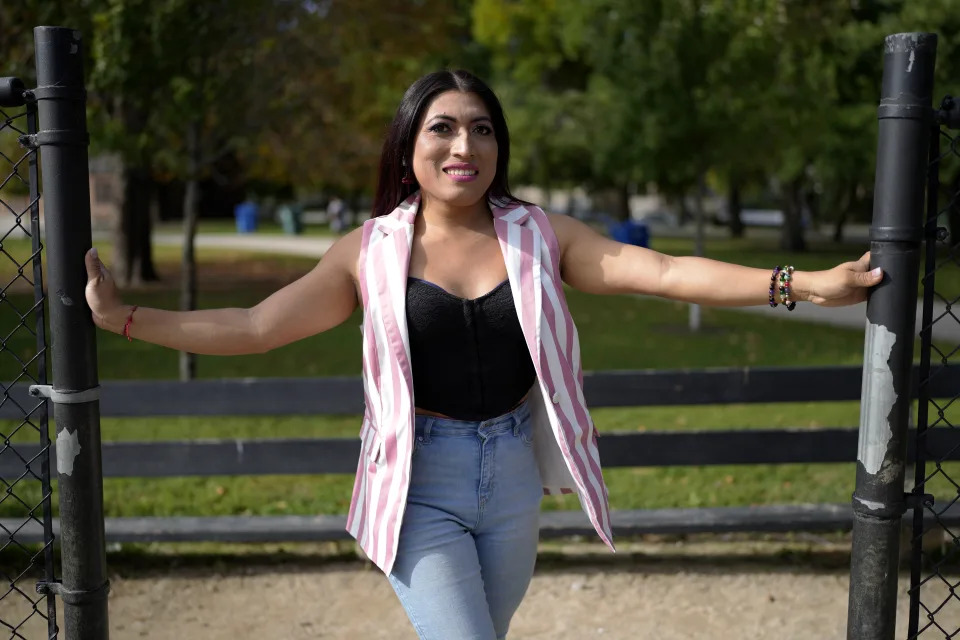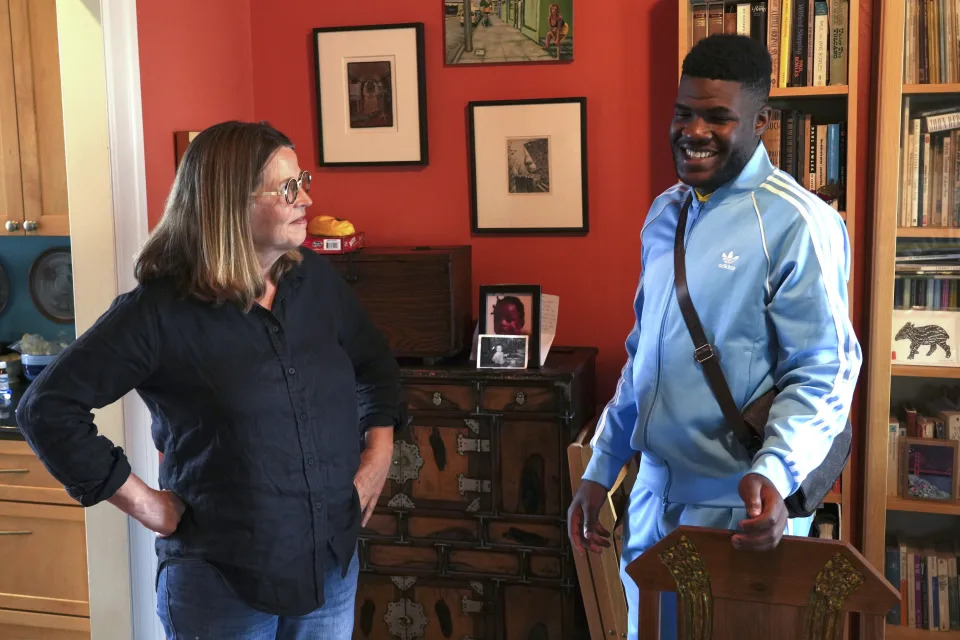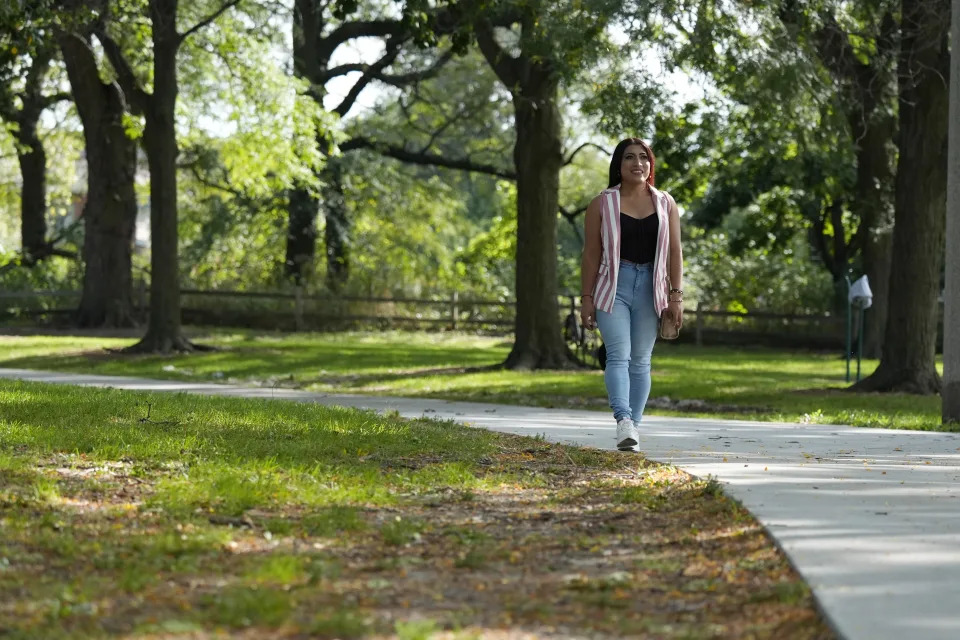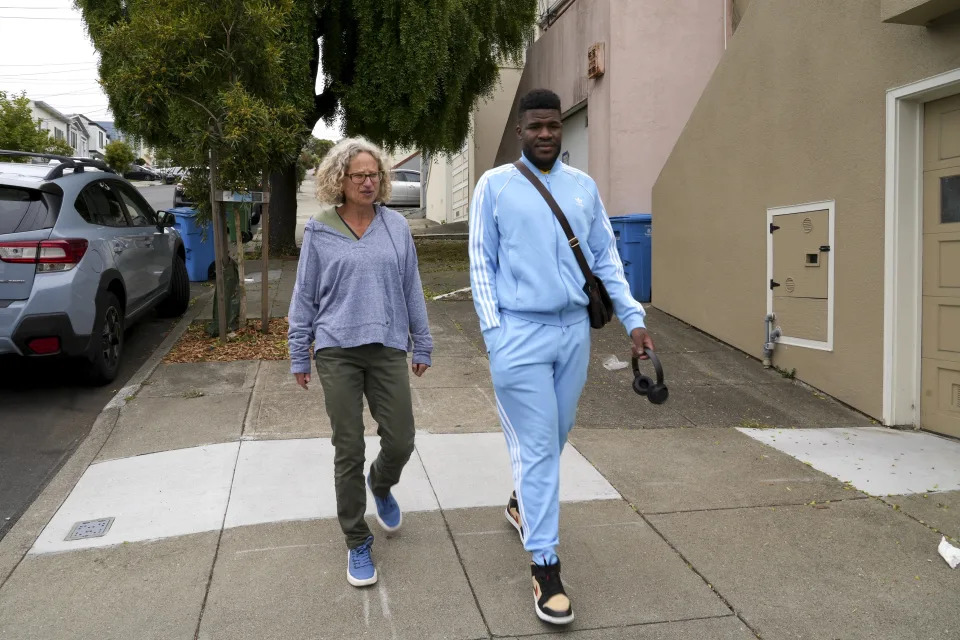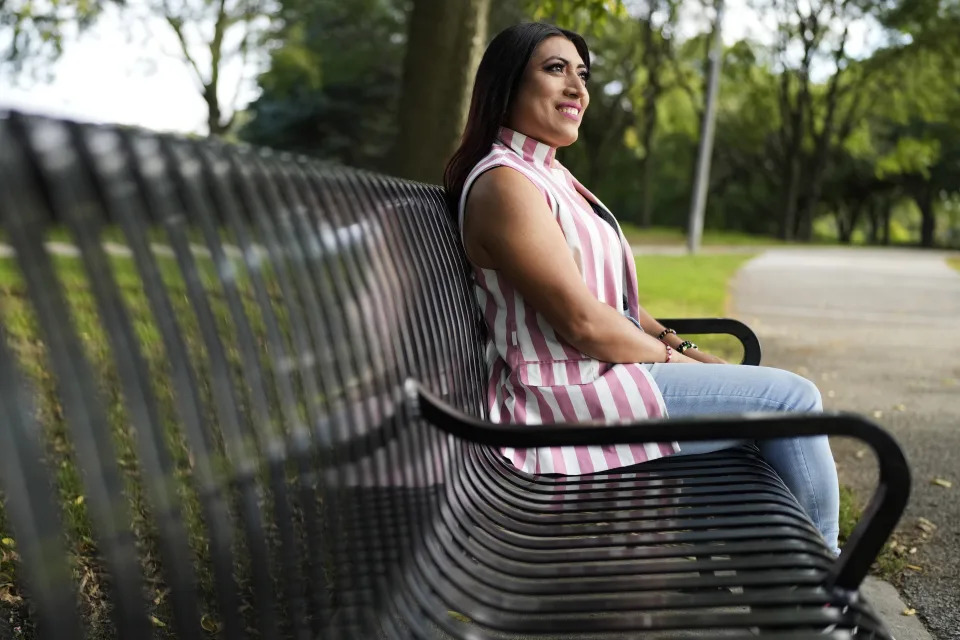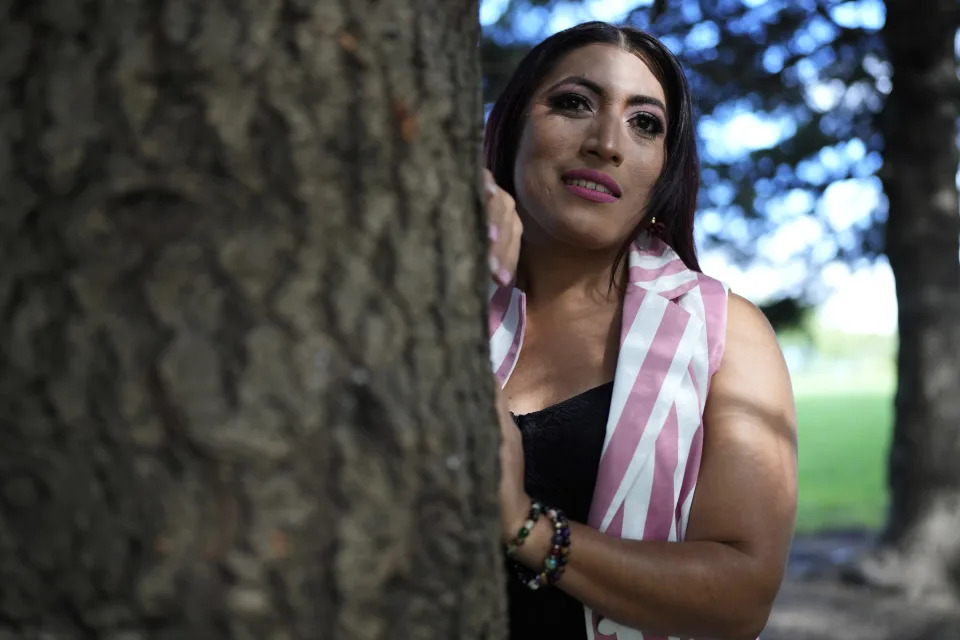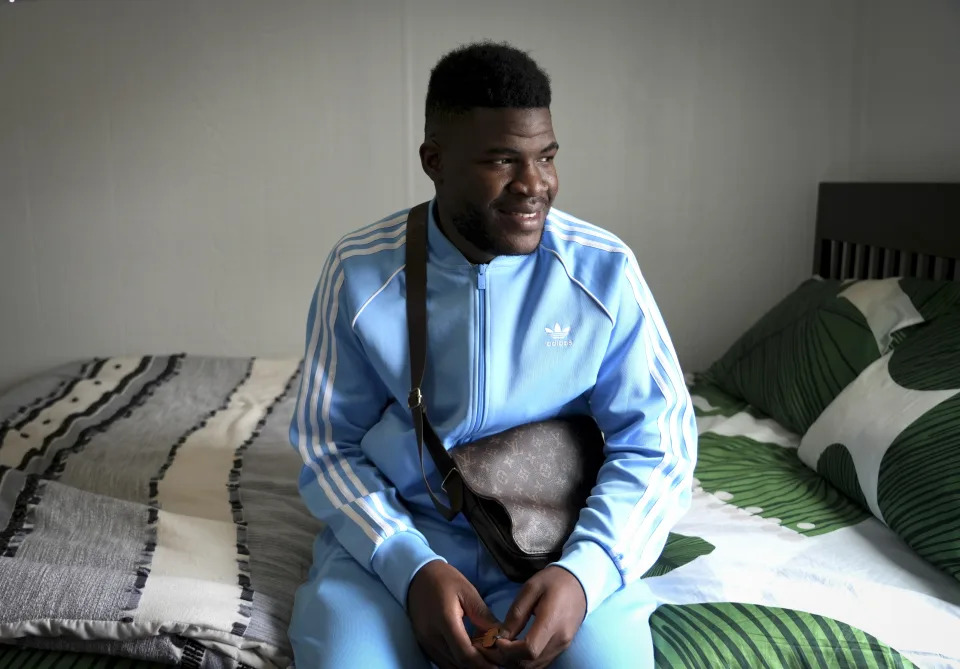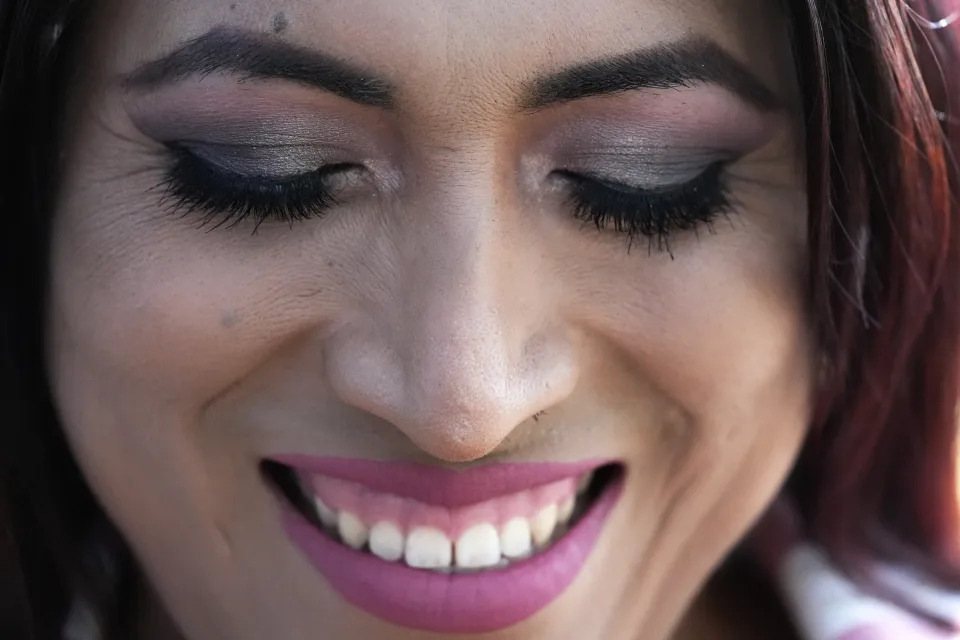Ted Hesson, Kristina Cooke and M.B.Pell
Sat, October 5, 2024





U.S. teachers face language barriers, student trauma as record migration reaches classrooms
U.S. schools faced with rising numbers of migrant students
CHARLEROI, Pennsylvania - Dana Smith had been teaching first grade at the public school in the small Pennsylvania town of Charleroi for more than 16 years when she found herself confronting a new challenge last year: a sharp rise in students from Haiti who did not speak English.
She started using a phone app to translate lessons, but the constant pauses for translation frustrated her. She wondered if she was hindering the learning of American students who knew some of the basics she was reviewing, a complaint raised by a vocal segment of parents in the district.
"It was very stressful," she said. "We never know when we're going to get new ones coming in, where their levels are, how adjusted they are to this culture. The unexpected."
More than half a million school-age migrant children have arrived in the U.S. since 2022, according to immigration court records collected by Syracuse University, exacerbating overcrowding in some classrooms; compounding teacher and budget shortfalls; forcing teachers to grapple with language barriers and inflaming social tensions in places unaccustomed to educating immigrant students.
To gauge the impact of immigration on public schools across the U.S., Reuters sent a survey to more than 10,000 school districts. Of the 75 school districts that responded, serving a total of 2.3 million children or about 5% of the public school population, a third said the increase in immigrant children had had a "significant" impact on their school district.
While not exhaustive, the Reuters' survey, the first by a media organization, offers the most extensive view to date of how U.S. public schools are grappling with record migrant arrivals across the southern border.
The responses spanned school districts across 23 states, from Texas to Alaska, and include the largest urban district of New York City as well as the tiny and rural Hot Springs Elementary School District in southern California, with just 16 pupils.
Forty-two districts said they had hired more English as a Second Language (ESL) teachers and consultants. Fifteen districts described difficulties communicating with parents or a lack of interpreter services.
"Textbooks are not in their language. Resources are not easily available. Google Translate does not work that great," the Springfield City school district in Ohio said in its response to the survey conducted between late August and late September.
Republican candidate Donald Trump has made immigration a top talking point in the Nov. 5 presidential election, blaming his Democratic opponent, Vice President Kamala Harris, for record numbers of migrants illegally crossing the U.S.-Mexico border during President Joe Biden’s administration.
Trump also faults Harris for a Biden program launched in late 2022 that allowed legal entry to 530,000 Haitians and others with U.S. sponsors.
At a rally in Arizona last month, Trump used Charleroi, a town an hour south of Pittsburgh, as an example of the negative impacts of immigration.
About 2,000 immigrants, including about 700 Haitians, live in the town with many arriving in the last few years, according to Charleroi Borough Manager Joe Manning, swelling a population that declined from over 11,000 a century ago to 4,200 in the 2020 census.
"Charleroi, what a beautiful name, but it's not so beautiful now," Trump told supporters. "The schools are scrambling to hire translators for the influx of students who don't speak, not a word of English, costing local taxpayers hundreds of thousands of dollars."
Washington County, where Charleroi is located, backed Trump over Biden in 2020 by 23 percentage points, symbolizing a part of the rural vote that could help Trump win Pennsylvania, the most important of the election battleground states that could decide control of the White House.
The vast majority of Haitians arriving in the U.S. since 2023 entered legally or are eligible to remain and seek work permits through the Temporary Protected Status program.
While Trump has derided a wide range of immigrant groups throughout his political career, he has taken particular aim at Haitians, questioning while president in 2018 why the U.S. would accept Haitians and immigrants from 'shithole countries' in Africa.
He thrust immigration to the forefront of a Sept. 10 debate with Harris when he repeated a false rumor that Haitian immigrants were eating pets in Springfield, Ohio. Public schools and other city buildings in Springfield received bomb threats after the debate.
Amy Nelson, an assistant principal in the Charleroi school district, said the school has not received direct threats but she is concerned about anti-Haitian posts in a local Facebook group, including a re-post of a purported Ku Klux Klan group describing Haitians in Springfield in derogatory terms and calling on Americans to "stand against forced immigration."
In response to a Reuters request for comment about the effects of migration on schools, a campaign spokesperson pointed to Trump remarks at a Sept. 23 rally in Pennsylvania.
"It takes centuries to build the unique character of each state," Trump said at the time. "Reckless migration policy can change it very quickly."
The Harris campaign touted $130 billion directed to schools under Biden's 2021 economic stimulus package. Harris “will build on those investments and continue fighting until every student has the support and the resources they need to thrive,” Harris campaign spokesperson Mia Ehrenberg said in a statement to Reuters.
White House spokesperson Angelo Fernandez Hernandez said the Biden administration has increased funding to address teacher shortages and requested $50 million in new funding to support English language learning.
In the Reuters survey, 17 districts said they requested additional state funds to help immigrant students. Twelve of these districts reported receiving additional funds - including a district in New Jersey that said it still wasn't enough to hire an ESL supervisor.
Ten districts said their teachers were not well-trained or received no training to meet the needs of new immigrant students, and 42 said they would welcome more training for teachers and administrators. The training requests included how to teach kids who don't speak English, how to approach different cultural norms and how to help kids recover from trauma.
"Anytime you have an unpredictable pattern of student enrollment all at once, the strain it creates on the system is tremendous," Denver Public Schools Superintendent Alex Marrero wrote in his response. Denver has seen a huge increase in migrant arrivals since 2023, in large part due to the state of Texas busing 19,200 people from the U.S.-Mexico border to the Democratic-run city.
In addition to the language barriers and differences in educational backgrounds, the jump in arrivals "required our system to stand up processes across the city to not only communicate with families but also support them in getting their basic needs met in order to have students coming to school ready to learn," Marrero wrote.
Still, 11 respondents said - unprompted - that the newcomers had enriched the school community, bringing new perspectives and resilience that other children could learn from.
SIGNS OF STRAIN
On a rainy Wednesday morning at Charleroi High School, students shuffled between classes in small groups. "Hello, my Haitian friends," one American student said as he passed Haitian girls walking in the opposite direction.
Julnise Telorge, an 18-year-old from Haiti in her final year of high school, said she feels safe in Charleroi - despite the time last school year when a white student bumped into her in the hallway and made a derogatory comment.
Telorge said the comment upset her and that she did not know why someone would say that. "I think because she doesn't like Blacks," she said.
School district officials said they were unaware of the incident.
The number of non-English speaking students in the 1,450-student Charleroi Area School District shot up to 220 currently from just 12 in the 2021-2022 school year, according to the district administrators. About 80% percent of those students are of Haitian descent, Superintendent Ed Zelich said.
Like many of the Haitians arriving in Charleroi, the Telorge family were attracted by job openings at Fourth Street Foods, a plant packaging frozen breakfast foods located on a hill just below the school complex.
Telorge's father, Julis, works at the plant where he earns $15 an hour, he said. He is applying for asylum.
About a third of the plant's 1,000 workers are Haitian, according to its owner Dave Barbe, who said that there are not enough Americans in the area to do the work.
The school district has hired five new staff members, including three teachers specializing in English for non-native speakers, as well as a part-time interpreter, Zelich, the superintendent, said.
He estimated the cost at $400,000 a year, a fraction of the district's $30.7 million budget, but a cost the district has covered while it waits for possible reimbursement by the state.
And there are additional costs.
After parents of 37 children pulled their kids out of the school district this year to send them to the local charter school, the district was legally required to pay an additional $500,000 for transportation and the higher charter school tuition, Zelich said.
Beth Pellegrini, who attended Charleroi public schools herself as a child and served on the Parent Teacher Association, said she decided this year to send her three children to the charter school in part because teachers were too busy trying to communicate with non-English speaking students to give them enough attention.
Her 7-year-old daughter was struggling with math while her sons, who are older, have attention-deficit/hyperactivity disorder.
"My kids were all falling behind," Pellegrini said. "It wasn't just the immigrants, but it felt like the teachers didn't have the time to dedicate to them."
Joseph Gudac, the Charleroi school district business manager, said he expected the local school tax there would need to increase if the number of non-English speaking students keeps rising.
MAKING PROGRESS
The new dynamic in some American classrooms has challenged teachers to adapt, but it hasn't been without strains.
In the United States, all children, regardless of their immigration status, have a right to a free public education. But the federal government pays for only a small fraction of newcomer educational services.
Smith, the Charleroi first-grade teacher, workshopped ideas with her colleagues on how to cope. She paired Haitian students with more advanced English skills with beginners, she said. She used more physical cues, pointing to get students to sit in their seats.
She incorporated repetition into her lessons, particularly around language.
Yet when the school offered to pay for teacher training, Smith did not want to take on another work assignment on top of her day job.
"That's just one more thing that I have on my plate that I would rather not have," she said, noting that she planned to retire in a few years. "They should be wanting to learn our language, learn our culture."
Despite the challenges, Smith said the situation has improved. While she has six English language learners out of 17 students in her classroom this year, they all attended kindergarten at the school and have a good working knowledge of the language.
During a class last month, she started the day with basics: roll call, sharpening pencils, reviewing the days of the week, and the Pledge of Allegiance to the American flag in the back corner of her colorful classroom.
The students followed the lesson and responded to cues.
"They have already had a year under their belt," she said. "So I can see that their progression has made a big difference."
One Haitian girl in Smith's class went from speaking no English when she entered school last year to receiving an award for academic excellence, according to Nelson, the assistant principal.
The girl's mother died of breast cancer last year and Nelson and her husband are trying to adopt her.
"She is so resilient," Nelson said.
HOPES FOR THE FUTURE
When Haitian students at Charleroi's high school need to talk to a teacher, they often go to Bridget DeFazio.
DeFazio, 40, started teaching French at the school in 2008. Her language skills suddenly became more sought after as dozens of Haitians, many of whom understood or spoke French, enrolled in the middle school and high school.
DeFazio and another teacher paid out of pocket for an ESL certification last year and she now teaches ESL classes in addition to French.
"Yeah, it has been challenging, but for me, a good challenge," she said. "I mean, I've been here 17 years, so it was almost like a breath of fresh air for me, something new that I can try."
When students walked into her ESL class last week, she greeted them in Haitian Creole.
The 10 students in her class took notes and answered questions as she ran through adjectives - smart, dumb, funny, happy, sad, shy - in a booming voice that filled the room.
"I've never seen kids more eager to learn," DeFazio said. "At the end of the day, they are teenagers. They're going to get into trouble, they're going to be late for class, they're going to test the limits. But when I pull them aside and talk to them, it's, 'OK, madame, we get it.'"
(Reporting by Ted Hesson in Charleroi, Pennsylvania, Kristina Cooke in San Francisco, and M.B. Pell in New York; Story editing by Suzanne Goldenberg and Mary Milliken; Data editing by Benjamin Lesser; Photography and video by Carlos Barria; Video production by Olivia Zollino and Grace Lee; Story design by Jillian Kumagai.)

